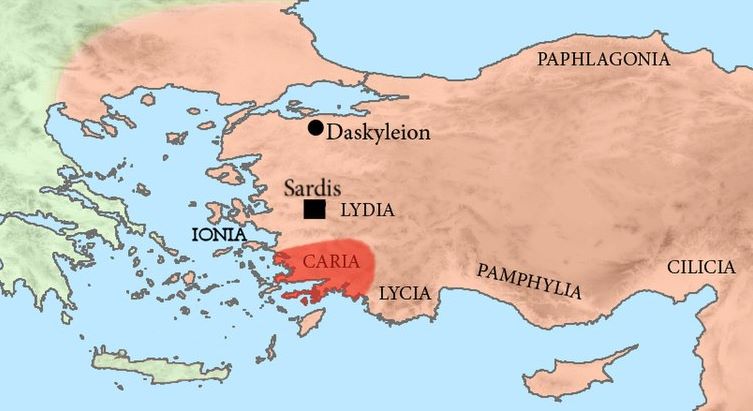Carians are among the Western Anatolia’s indigenous people, whom Sumerian once called ”Carians: People living in the garden of the Sun”. Carieans lived in an area which includes the whole of Mugla city and parts of Aydın and Denizli cities of today’s Turkey.

The Carians, whose existence is known in Western Anatolia since the 2nd millennium BC and whose names are mentioned in the Hittite texts, the Torah and the Egyptian Hieroglyphs, are considered to be the continuation of the Luwians who were the native people of Anatolia. Caria means “Land of the Peaks”. Their indigenous Carian language has not been fully translated yet.
One of the claims about labrys (double-edged axe), which is the symbol of the Carians, is that labrys was one of the sacred signs of the kings of Lydia, and that once a labrys was gifted to Carian Zeus in the time of the Lydian king Giges.
The Carians who fought alongside the Trojans like other Anatolian peoples during the Trojan War, retreated to the inner parts of the region after the Greek immigrants came to the west Anatolian shores in the 12th century BC.
Carian cities, which preserved their independence until 545 BC, lost their independence when whole Anatolia went under Persian rule in 545 BC and became one of the administrative units of the Persian Empire.
During their stay under Persian rule, although they occasionally rebelled against Persian domination together with the Greek city states and Ionian cities led by Athens, the Carians stayed away from rebellion in the future.
In Caria, just as in Egypt, brothers and sisters married each other. Like the king Mausolos with Artemisia, Queen Ada is married to her brother Idrius.
Carians resisted the armies of Alexander the Great but could not regain their old power after the invasion and began to shrink. After the Roman and Byzantine rule, Carians passed into the hands of the Turks in the 11th century.
Hire English-speaking Tour Guide in Caria
Caria and Carian culture always has been a great mystery. Carian language and customs are still being unraveled today. You can explore today’s Bodrum, Denizli and Aydın to learn more about Carians. Contact me to book an English-speaking professional licensed tour guide to visit Carian attractions. See you soon, Hasan Gülday.